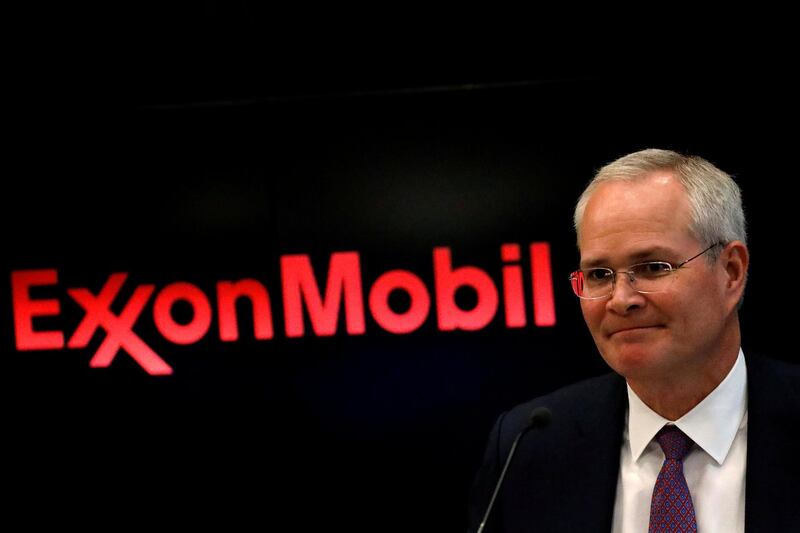The world’s biggest public energy company doesn’t worry about size when it comes to potential deal-making.
The driver of any acquisition for ExxonMobil isn’t the scope of the target, it’s whether the company finds more value in it than the market does, Darren Woods, chief executive of the Texas-based firm, said at the New Economy Forum in Singapore. The explorer is looking for opportunities to purchase assets even as it plans to expand output at existing fields from West Texas to Mozambique.
“We have the capacity to do any size opportunity that can come about, so it’s really a function of looking at the value that ExxonMobil can extract, and how we would integrate that into our portfolio,” Mr Woods said, while declining to comment on any specific targets.
Exxon still sees a bright future for the oil industry, with 2.5 billion people set to enter the middle class in the next 20 years. That means more liquefied natural gas for electricity, more petrochemicals for plastics, and more oil to fuel the heavy-duty transportation required to move consumer goods.
_______________
Read more:
Live: Michael Bloomberg opens New Economy Forum in Singapore
Chinese city in talks with Exxon for $7bn petchems plant
_______________
The company is seeking to grow production with a focus on Guyana, Brazil, Papua New Guinea, Mozambique and the Permian Basin in West Texas and New Mexico. Exxon has already surpassed its plan to mobilise about 30 rigs in the US shale region by year’s end: the company had 38 machines drilling Permian wells as of last week, a 40 per cent increase in just six months.
Still, Mr Woods said the company remains committed to not rushing development in the region. West Texas Intermediate crude prices had risen 26 per cent this year through early October before giving back nearly all of the gains in the past month.
“The price in the oil markets are going to go up and come down again, and our view is the business we build in the Permian, we’re building for the long term,” he said.
“It needs to be efficient, low-cost and effective, so we’re making sure the pace we go at allows that to happen.”






